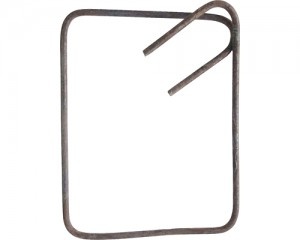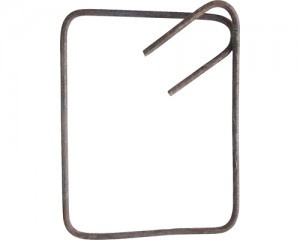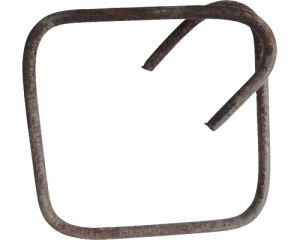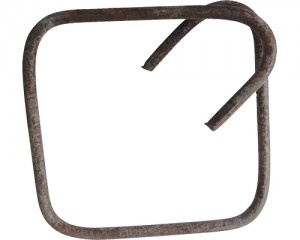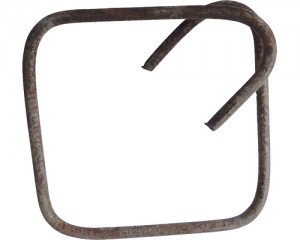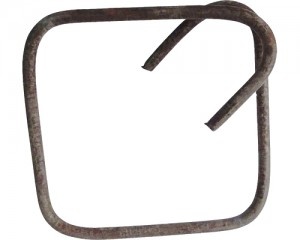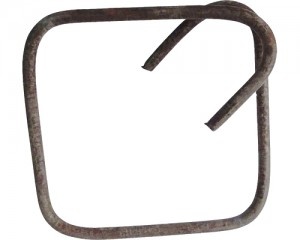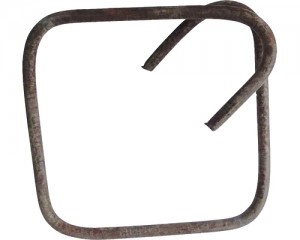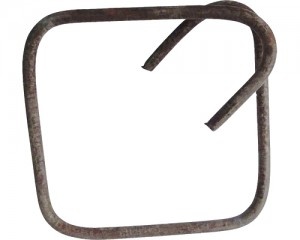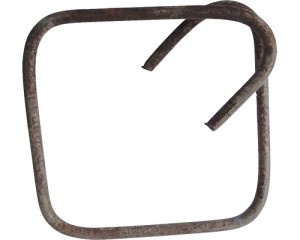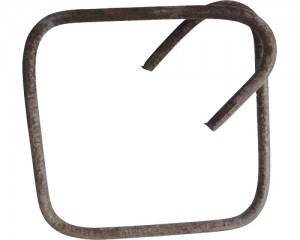CONCRETE IRON 8MM 15X20CM (PACK 20 PCS)
Description
CONCRETE IRON 8MM 15X20CM (PACK OF 20 PCS)
Size: 15x20 cm
Thickness: 8 mm
Cast iron construction stirrups are essential metal elements used in reinforced concrete structures, playing a key role in ensuring the strength and stability of civil, industrial or hydro-technical constructions. They are manufactured by machining steel concrete, usually by cutting, bending and shaping, to form rectangular, square or other geometries, depending on the project requirements. In the following, I provide a detailed and extensive description, based on available information, including the function, types, materials, manufacturing process, uses, and advantages of cast iron stirrups.
1. What are cast iron stirrups?
Stirrups are concrete steel components that are moulded, i.e. mechanically or automatically machined to specific shapes, such as straight-sided frames with butt ends (bent extensions for anchoring). They are mainly used for the transverse reinforcement of reinforced concrete elements such as columns, beams, girders, belts, foundations or slabs. The stirrups "wrap" around the longitudinal steel concrete bars, forming a casing that holds the concrete in place and improves the resistance of the structure to external forces, including seismic stresses.
2. Functions of stirrups in construction
Stirrups fulfil several essential functions in reinforced concrete structures:
- Stabilisation of longitudinal rebars: they ensure the correct positioning and fixing of longitudinal reinforcing bars during concrete pouring, preventing their displacement.
- Resistance to transverse forces: Absorbs part of the transverse forces (shear) from columns, beams or frames, increasing the bearing capacity of the structure.
- Prevent cracking and bursting: Through their "shrinkage" (bracing) effect, stirrups limit the deformation of concrete and prevent it from breaking or cracking under load.
- Improved earthquake resistance: Transverse reinforcement with stirrups helps structures withstand the alternating stresses during earthquakes, reducing the risk of collapse.
- Retaining the shape of the reinforcement: Stirrups form a rigid casing that retains the geometry of the reinforcement until the concrete pour is complete.
3. Materials used
The stirrups are made of steel concrete, which may have a smooth or ribbed profile, depending on the design specifications. The main types of steel used are:
- OB37: Hot rolled, smooth profile steel, commonly used for calipers due to its malleability. Available in 6 mm and 8 mm diameters.
- BST500: Steel with a ribbed profile, with ribs arranged in opposite directions, providing superior bond with concrete. It is used for 8 mm, 10 mm or 12 mm diameter stirrups.
- PC52: Ribbed steel with ribs in the same direction, used for stronger reinforcement.
- B500C: High ductility steel, ideal for seismically stressed structures.
Typical diameters for stirrups range from 6 mm to 16 mm, depending on the size and purpose of the structure (foundations, columns, beams).
4. Manufacturing process
The moulding of stirrups involves machining the concrete steel to the shape and dimensions specified in the reinforcement plans. The process can be carried out in two ways:
- Manual: the steel is cut and bent with hand tools or simple devices. This method is slower, involves loss of material and is used for small orders or site work.
- Automatic: Computer numerically controlled (CNC) machines cut, bend and shape the steel according to project specifications. This method is fast, accurate and reduces material waste by up to 100%.
The stirrups are internally dimensioned according to STAS 855/1955(1979), and the beads (bent ends) are sized to ensure in- anchorage. Each caliper is labelled with details such as customer, design, plan, element, make, material, number of pieces, geometric shape and weight.
5. Types and sizes
Stirrups can be of various shapes (square, rectangular, polygonal, triangular) and sizes, depending on the project requirements. Common sizes include:
- 10 x 10 cm, 10 x 15 cm, 15 x 15 cm, 20 x 20 cm, 20 x 40 cm (outside dimensions).
- Common thicknesses: 6 mm, 8 mm, 10 mm, 12 mm.
The spacing between the spacers varies according to the project, but specialists recommend a minimum of 100 mm to ensure a good grip with the concrete and stability.
6. Main uses
Stirrups are used in various construction applications:
- Foundations: for reinforcing the foundations of houses, fences or industrial halls.
- Columns and beams: To support longitudinal bars and increase shear and compression strength.
- Bourses and beams: To ensure the continuity and stability of the structure.
- Tiles and other reinforced concrete elements: To prevent cracking and distribute loads evenly.
7. Advantages of using phased stirrups
- Reduced execution time: Automatic moulding enables the rapid production of stirrups according to drawings.
- Minimised material waste: Automated machining eliminates waste, reducing costs.
- Guaranteed quality: Stirrups comply with standards (e.g. STAS 438-1/2012, ST009/2011) and manufacturer certifications.
- Flexibility: Can be manufactured in any size or shape, according to design.
- Seismic resistance: They improve the behaviour of structures in earthquakes.
Details
Contact
Call now for any questions or to order:
+40769088858
+40769088860
+40769088861
+40769088862
Delivery
Offer
You want a lower price, you can't find what you are looking for, ask for an offer by email to: vanzari@pdet.ro





